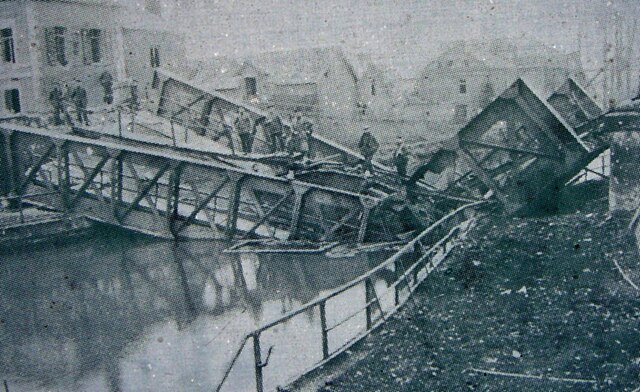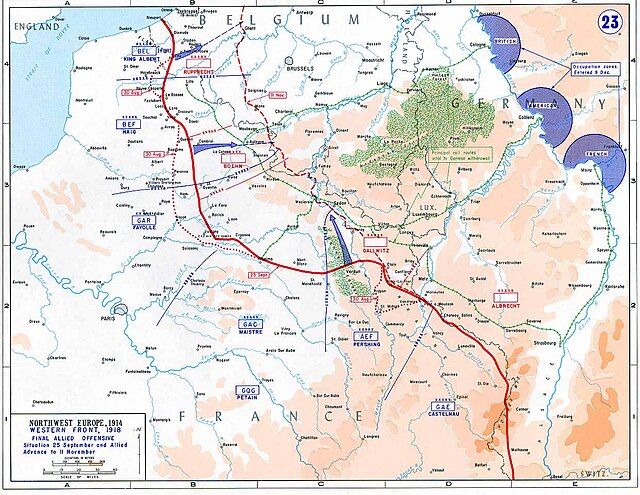The Battle of Cambrai was a British attack in the First World War, followed by the biggest German counter-attack against the British Expeditionary Force (BEF) since 1914. The town of Cambrai, in the département of Nord, in France, was an important supply centre for the German Siegfriedstellung and capture of the town and the nearby Bourlon Ridge would threaten the rear of the German line to the north. Major General Henry Tudor, Commander, Royal Artillery (CRA), of the 9th (Scottish) Division, advocated the use of new artillery-infantry tactics on his sector of the front. During preparations, J. F. C. Fuller, a staff officer with the Tank Corps, looked for places to use tanks for raids. General Julian Byng, commander of the Third Army, decided to combine both plans. The French and British armies had used tanks en masse earlier in 1917, although to considerably less effect.
German soldiers recovering a British Mark IV tank
Cambrai area, 1917
Cambrai salient north, 1917
The bridge at Masnières, collapsed by the weight of a Mark IV tank
British Expeditionary Force (World War I)
The British Expeditionary Force (BEF) was the six divisions the British Army sent to the Western Front during the First World War. Planning for a British Expeditionary Force began with the 1906–1912 Haldane Reforms of the British Army carried out by the Secretary of State for War Richard Haldane following the Second Boer War (1899–1902).
British troops from the 4th Battalion, Royal Fusiliers (City of London Regiment) resting in the square at Mons 22 August 1914, the day before the Battle of Mons
A British trench near the Albert-Bapaume road at Ovillers-la-Boisselle, July 1916 during the Battle of the Somme. The men are from A Company, 11th Battalion, The Cheshire Regiment
The front line in 1916, British gains during the battle of the Somme are shaded blue.
The French, British, Belgian and American lines of attack, during the Hundred Days Offensive








